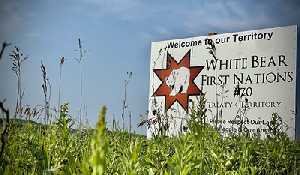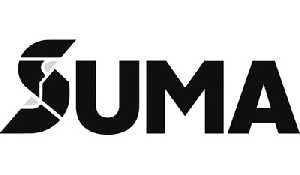Project description filed for TransCanada’s Energy East
March 25, 2014, 3:04 am
Kevin Weedmark


TransCanada Corp. has taken the first step toward obtaining regulatory approval for its proposed $12-billion, 4,600-kilometre Energy East oil pipeline by filing a project description with the National Energy Board earlier this month.
TransCanada wants to convert 3,000 kilometres of existing natural gas pipeline and build about 1,600 kilometres of new pipeline in Quebec and New Brunswick. It is expected the west-east pipeline would transport 1.1 million barrels a day of crude oil from Alberta to the Irving Oil refinery in Saint John.
Also planned are new pumping stations, oil storage terminals and a joint venture with Irving for a new $300-million deep-water marine terminal.
The Mooosmin area would play a key role in Energy East.
A tank farm would be built next to TransCanada’s Moosomin compressor station northeast of town with the capacity to hold 1,050,000 barrels of oil.
TransCanada would also build a feeder pipeline from Cromer, Manitoba to the Moosomin compressor station, where the Bakken oil would be added to the TransCanada system to be piped to eastern
There would be a handful of permanent jobs at the tank farm, and construction activity related to the Cromer pipeline and the tank farm in 2015 and 2016.
TransCanada spokesman Philippe Canon said the project description is a summary description outlining the formal application which will be submitted in mid-2014.
“The project description is a 140-page document, a brief resume of what we intend to do. In Mid-2014 we will file the actual application. We’re still fine tuning. We’re in the open houses engaging with stakeholders and gathering information.
“We still have to do certain assessments out east, mainly in Quebec and New Brunswick. Generally the route we are going to take is the one that we wish to file to the NEB, but there may be some small changes.”
He said the route of the Cromer pipeline is being finalized after talking with landowners. The route has changed slightly because of the location of oil wells and a water pipe. TransCanada is negotiating easements with landowners along the route, and will purchase land for the tank farm at Moosomin and for a compressor station at Cromer to power the Cromer to Moosomin pipline.
“We’re still in the process of looking at the route and talking to landowners. It’s not an endeavor that is as big as what we are doing out east, but we’re still in the process,” Cannon said. “Much of the job is done, but there are some small things to finish up.”
He said the open houses are an important part of the process.
“We’re always happy to be able to talk about the project to people who have questions,” he said. “It’s an ongoing process. TransCanada is a company that reaches out to its stakeholders.”
The route across the country has been narrowed down based on public consultation and engineering and environmental field work since early in 2013.
TransCanada has held meetings about the project in 500 communities and has met with 5,500 landowners in the six provinces through which the proposed pipeline will run—New Brunswick, Quebec, Ontario, Manitoba, Saskatchewan and Alberta.
Of the 155 First Nations and Métis communities consulted, TransCanada says 56 have signed letters of agreement so far.
“TransCanada is proud of the relationship we’ve built over the years with 60,000 landowners across North America on our oil and natural gas pipeline network. And we plan to keep that strong relationship with the new landowners on the Energy East pipeline project,” said Cannon.
“Landowners have been and will continue to be informed and consulted. Not only throughout the regulatory process, but also with an open and transparent process throughout the whole project.”
The document filed with the National Energy Board describes the environ-mental assessment process and provides preliminary information about the scope of activities and the process.
If the National Energy Board gives its approval for the project, Cannon expects the pipeline to be in service in late 2018 for deliveries in New Brunswick and earlier that year in Quebec.
Energy East would take shipments of crude oil from two points in Western Canada—Hardisty, Alta. and Moosomin—and ship it to eastern refineries that currently rely on imported oil, and to an export position at St. John, New Brunswick. Western Canadian crude currently sells at a significant discount to the world price because of the lack of export options.



































